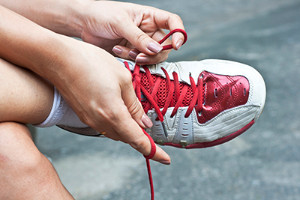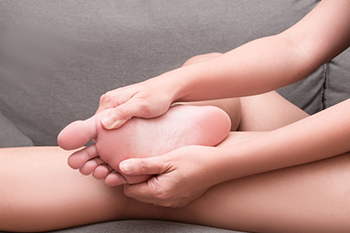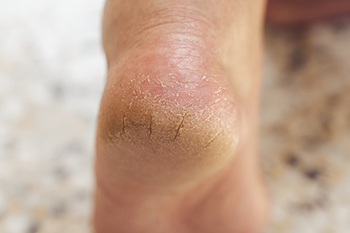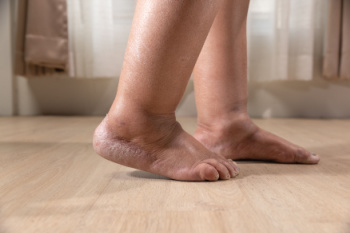
Achilles tendon injuries are a frequent concern for cyclists due to the repetitive motion and sustained force placed on the lower leg. The Achilles tendon connects the calf muscles to the heel bone, and excessive strain can lead to inflammation or degeneration. Poor bike fit, improper cleat placement, and muscle imbalances may increase the likelihood of an Achilles tendon injury, particularly when the heel or toes are forced into an unnatural position while pedaling. Symptoms include stiffness, swelling, and pain near the heel or along the tendon, which may worsen in the morning or after cycling. People with tight calf muscles or restricted ankle mobility may also be at higher risk, as limited flexibility can cause additional strain on the tendon. A podiatrist can evaluate your foot and ankle mechanics, recommend custom orthotics to improve alignment, and provide treatment to reduce pain and promote healing. Severe cases may require surgery to repair tendon damage. If you are experiencing Achilles tendon pain, it is suggested that you schedule an appointment with a podiatrist for a diagnosis and appropriate treatment options.
Achilles tendon injuries need immediate attention to avoid future complications. If you have any concerns, contact Scott Samera, DPM of Samera / Foot + Ankle. Our doctor can provide the care you need to keep you pain-free and on your feet.
What Is the Achilles Tendon?
The Achilles tendon is a tendon that connects the lower leg muscles and calf to the heel of the foot. It is the strongest tendon in the human body and is essential for making movement possible. Because this tendon is such an integral part of the body, any injuries to it can create immense difficulties and should immediately be presented to a doctor.
What Are the Symptoms of an Achilles Tendon Injury?
There are various types of injuries that can affect the Achilles tendon. The two most common injuries are Achilles tendinitis and ruptures of the tendon.
Achilles Tendinitis Symptoms
- Inflammation
- Dull to severe pain
- Increased blood flow to the tendon
- Thickening of the tendon
Rupture Symptoms
- Extreme pain and swelling in the foot
- Total immobility
Treatment and Prevention
Achilles tendon injuries are diagnosed by a thorough physical evaluation, which can include an MRI. Treatment involves rest, physical therapy, and in some cases, surgery. However, various preventative measures can be taken to avoid these injuries, such as:
- Thorough stretching of the tendon before and after exercise
- Strengthening exercises like calf raises, squats, leg curls, leg extensions, leg raises, lunges, and leg presses
If you have any questions please feel free to contact our office located in Lake City and Branford, FL . We offer the newest diagnostic tools and technology to treat your foot and ankle needs.













